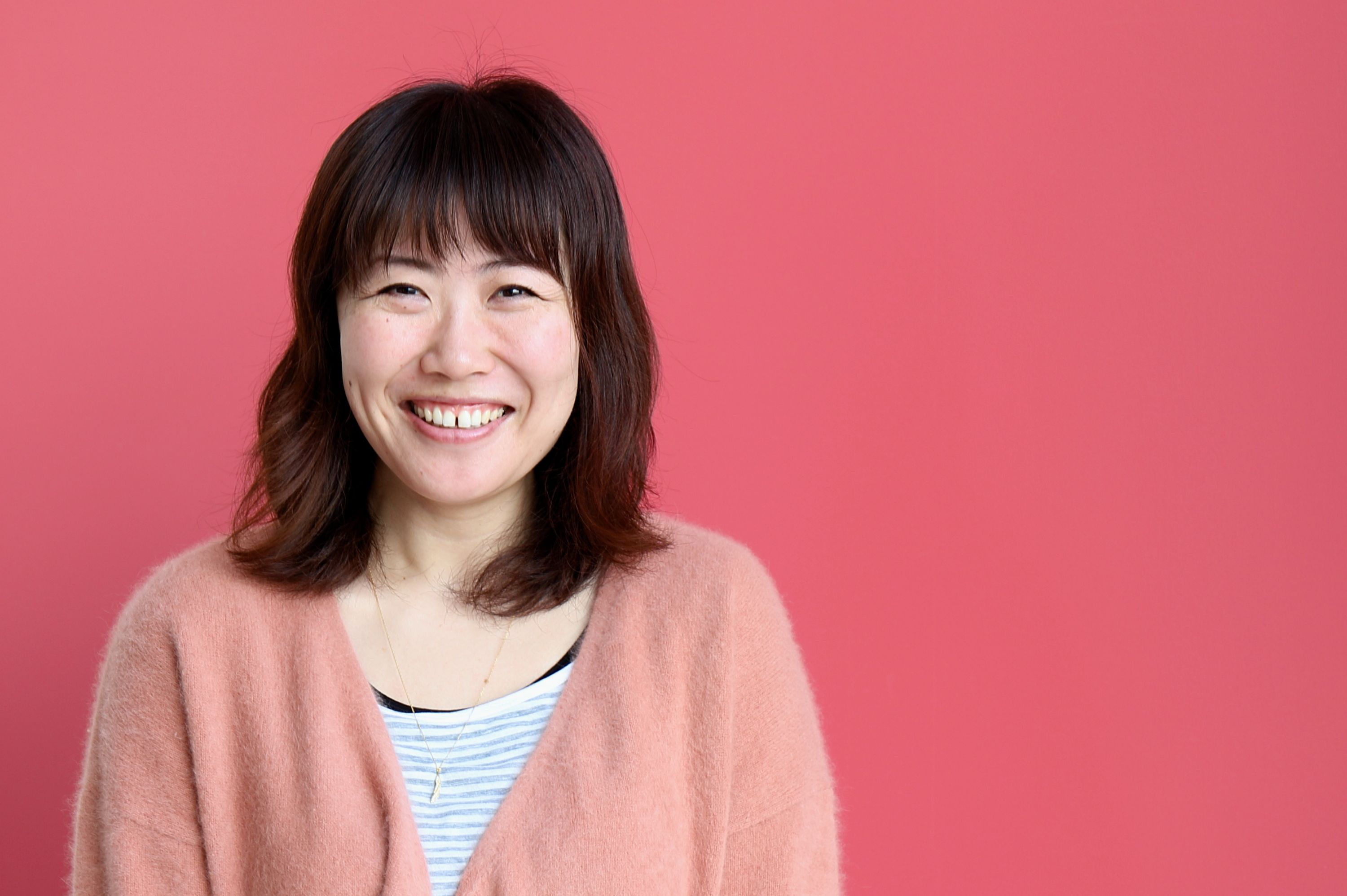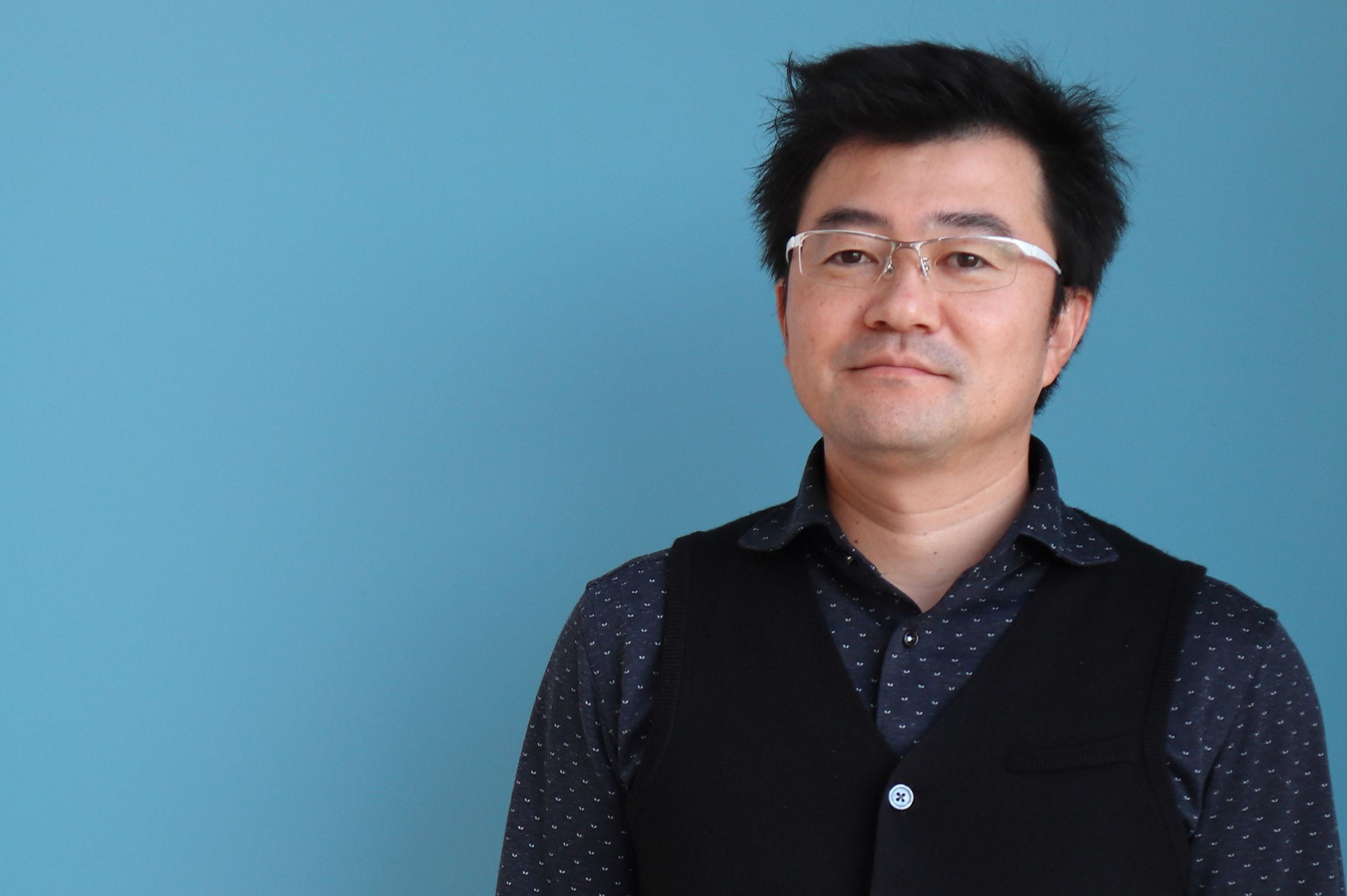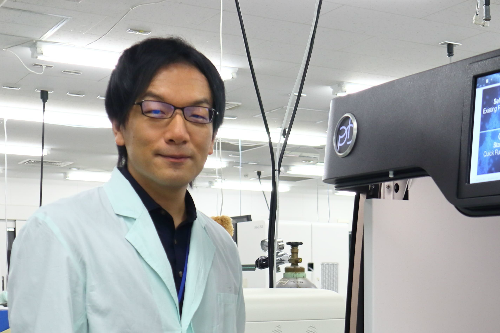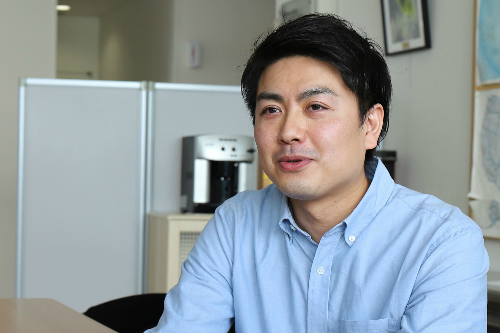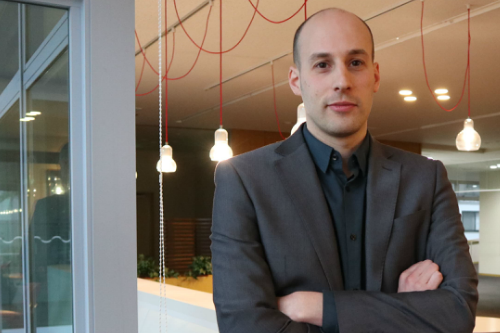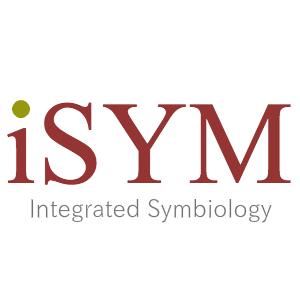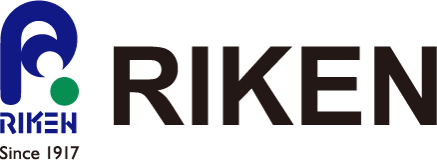iSYM People 3...
Our work will contribute to uncover the mutualistic relationship and interaction between us humans and symbiotic bacteria
Dr. Taichi Umeyama
Laboratory for Microbiome Sciences, RIKEN Center for Integrative Medical Sciences
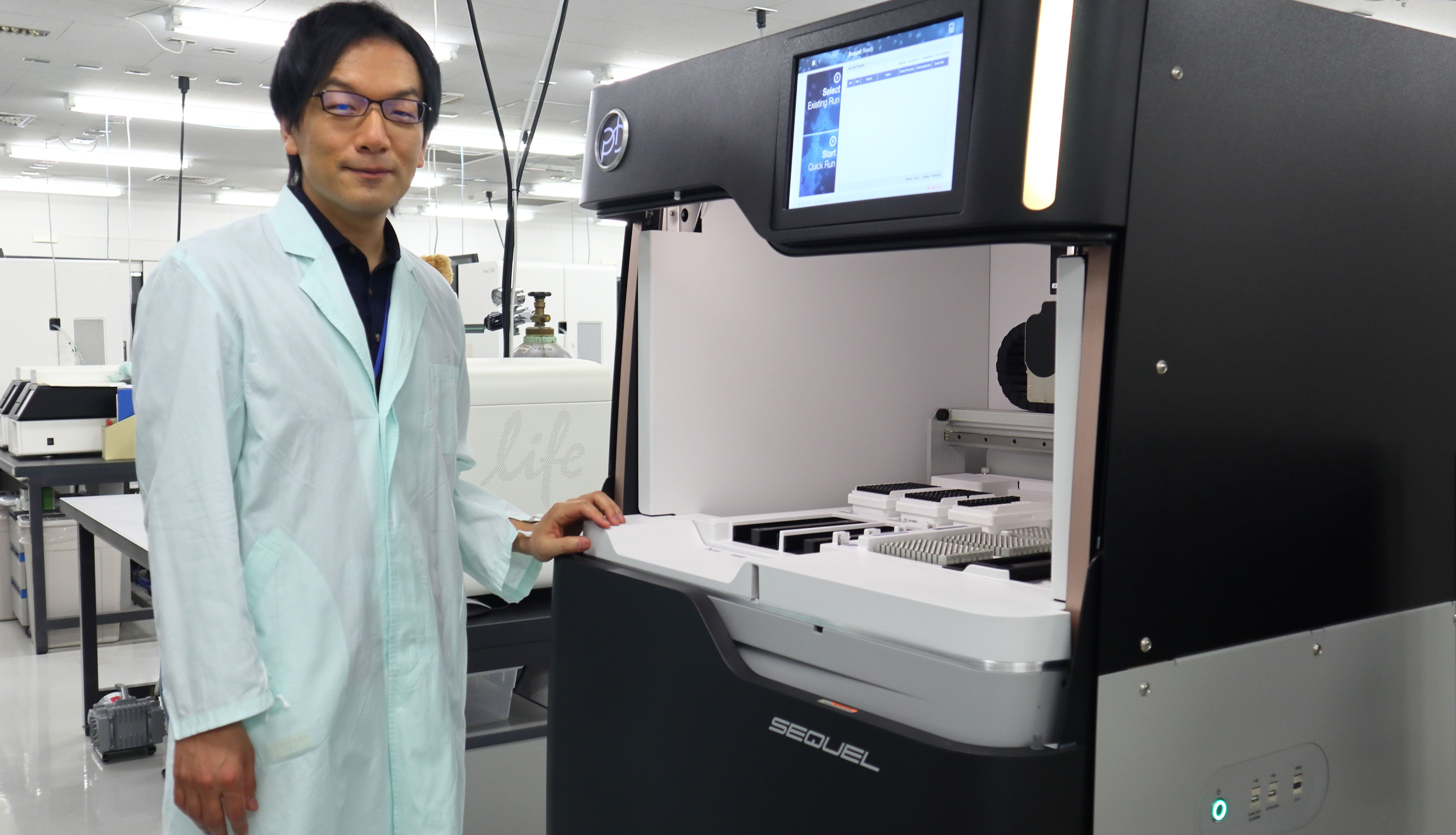
At RIKEN Yokohama campus
━━━What is your current research?
- I’m working on the studies of host-microbe interactions especially focusing on the analyses of the structure of human gut microbiome. For this purpose, I’m engaged in DNA sequence analysis using next-generation sequencing technology and bioinformatics analysis to handle a vast amount of DNA sequence data.
- I belong to the laboratory for Microbiome Sciences, and one of our goals is to provide highly-accurate data for the databases of human gut microbiome. DNA sequence databases are bases for the study of microbiome. If no useful databases are available, we can’t make sense out of sequence data alone, and that a problem of determining the structure of microbiome is far beyond the reach of us. Since we will provide our data from RIKEN Japan to the world, we think that sequence data of Japanese gut microbiome based on highly accurate metagenome analysis is the priority issue. To address this, we are using long-read sequencing as well as short-read sequencing technologies especially for the analysis of bacterial genomes. Since bacteria have a circular genome, the sequence reads are assembled in a circular structure if the reads are sufficient quantity, correctly connected together and covering entire regions of the genome. We are now investigating several experimental processes and informatics pipelines to maximize the cost-effectiveness and try to progress this task as efficiently as possible. Our high-quality Japanese gut microbiome data makes it possible to reveal, for example, how gender and age affect microbiome, and also by comparing Japanese data to American, European and Asian data lead to a better understanding of how diet and lifestyle affect intestinal microbes, and vice versa. Our work will contribute to uncover the mutualistic relationship and interaction between us humans and symbiotic bacteria.
━━━What kinds of techniques do you use? Please briefly explain them.
- We are using next-generation sequencing platforms PacBio Sequel and Illumina MiSeq, and analyzing the structure and function of microbiome by 16S ribosomal RNA (rRNA) and metagenome analysis. 16S rRNA genes are usable for ascribing a strain to the phylogenetic tree, so the number of 16S rRNA sequences observed in a sample represents the composition of microbial communities.
The advent of next-generation sequencing technologies enabled us to collect sufficient number of 16SrRNA sequences to obtain statistically significant conclusions. The third-generation long-read sequencing technologies bring us great advantage both for 16S rRNA and metagenome analyses. First, 16S rRNA regions are approximately 1.5kb but read length of short-read sequencing technologies are only several hundreds of bases and unable to cover the entire region. Therefore, phylogenetically close bacteria are hard to discriminate, but read length of PacBio Sequel easily cover entire 16S rRNA regions, makes it available for discriminating closely related species even in a strain level. Second, in metagenome analysis, we randomly sequence genomes not just 16S rRNA region, and although metagenome analysis requires lots of sequences and costs more than 16S rRNA analysis, this analysis can reveal the abundance of genes. From metagenome data, we can estimate what function of genes are enriched in a bacterial community. In this analysis, we first assemble the sequence reads to obtain large fragments, and then estimate a function of genes encoded in the fragments, so the longer the assembled fragments are, the more highly accurate estimation we can perform. Therefore, long-read sequencing technologies are indispensable for us to perform highly accurate metagenome analysis.
━━━Please tell us about bioinformatics more. What excites you the most?
- I think there are two fascinating aspects of bioinformatics. First, to understand complex biological systems, cataloging lots of biological components or scrutinizing only one component are both insufficient. Comprehensive and quantitative bioinformatics analysis of biological components and connectivity among them provide us clues to organize a vast amount of information in complex biological systems. That’s also a lot of fun for me to design next experiments from the hypothesis proposed from the bioinformatics analysis. Second, explicitly describing biological process and building simulation model help us to get to correct understanding of biological systems. If we can correctly describe biological process and properly build simulation model, the model not only recapitulate experimentally observed results but predict behaviors of the biological system under new conditions. But if the prediction is incorrect, it means that the model and our understanding of biological systems are also incorrect, and the model and our understanding of biological systems should be modified. I think this repetitive testing through building approach leads us to better understanding of biological systems.
━━━How did you become interested in your current field of research?
- More than 10 years ago, I started my scientific career in a protein engineering research. I think recent application of CRISPR/Cas system in genome editing is the most attractive example in protein engineering. At that time, I was interested in diverse function of proteins encoded in microbial genomes, and tried to develop highly specific biosensor systems or material production. Protein engineering research starts from screening microbes that possesses a protein of interest, purification of proteins, sequencing amino acids, and then we can start cloning genes. Although it was a lot of fun, the experiments took a lot of time. At the same time, DNA sequence capability dramatically increased and experimental cost to complete microbial genome significantly decreased. From this evolution of DNA sequencing technology, I thought that experimental design of protein engineering studies would be totally renewed and genome sequencing would be an indispensable step to find out a protein of interest.
- Even though the increase of capability of genome sequence is great advantage, we still need to isolate the microbes before DNA sequencing. In fact, 99% of microbes are unculturable, and a vast number of genes is remaining as a promising arsenal of materials. Just then, I found a novel term “metagenome” in a paper and microbial genome sequencing was carried out without isolation and culture of microbes. I thought that DNA sequencing technology and metagenome approach would be game changers for future protein engineering and decided to enter genome science research field. At first, I was working on functional genomics studies and developed novel technology for the analysis of protein-DNA interactions genome-wide using next-generation sequencing technologies. Then I shifted to the analysis of the genome structure, and focusing on metagenome research. I now think that metagenome research has big impacts on diverse filed of science and society. This is far beyond the prediction I had more than 10 years ago.
━━━What has been your most memorable experience?
- In general, I’m very excited when I found novel things that no one knows in the world, and also when I first analyze a new type of data generated from new technologies or techniques. In RIKEN, I was very impressed from the data generated by PacBio Sequel. I think this sequencing technology has unique advances not only for long-read sequencing but for the analysis of DNA methylation. DNA methylation involves many biological systems, such as an immune system of prokaryote or gene regulation of eukaryote, so calling methylated nucleotide only by sequencing is fascinating for many researchers. I will try to develop new techniques using this sequencing technology and hope for finding novel things and contribute uniquely to scientific community.
━━━Lastly, what is your goal?
- I’m interested in building a simulation model describing mutualistic relationship and interactions between symbiotic bacteria and their host. To do this, I would like to develop unique techniques to derive data at different level of omics (genome, metagenome, transcriptome, proteome, and metabolome) in a comprehensive and quantitative manner. In the course of building and correcting the simulation model, I want to develop my understanding of biological systems closer to the truth.
━━━Thank you very much for your time, Taichi!
2018/08/10
Thank you for reading the article.
We will keep posting iSYM People Interviews. So please keep updated!
Dr. Sachiko Masuda
Plant Immunity RG, CSRS
"I want to create a highly accurate platform in which everyone can access it and refer the source of reads I metagenome."
Dr. Shigehiro Kuraku
Lab for Phyloinformatics, BDR
"I realized that many of nature’s questions are connected to the society around us and I may contribute to solve those!"
Dr. Taichi Umeyama
Lab for Microbiome Sciences, IMS
"Our work will contribute to uncover the mutualistic relationship and interaction between us humans and symbiotic bacteria"
Dr. Yasunori Ichihashi
Plant-Microbe Symbiosis Research and Development Team
"Plant x Microbe = 21st century's Green Revolution"
Dr. Arno Germond
Lab for Comprehensive Bio-imaging, BDR
"Push the fields of bio-imaging technology further"

